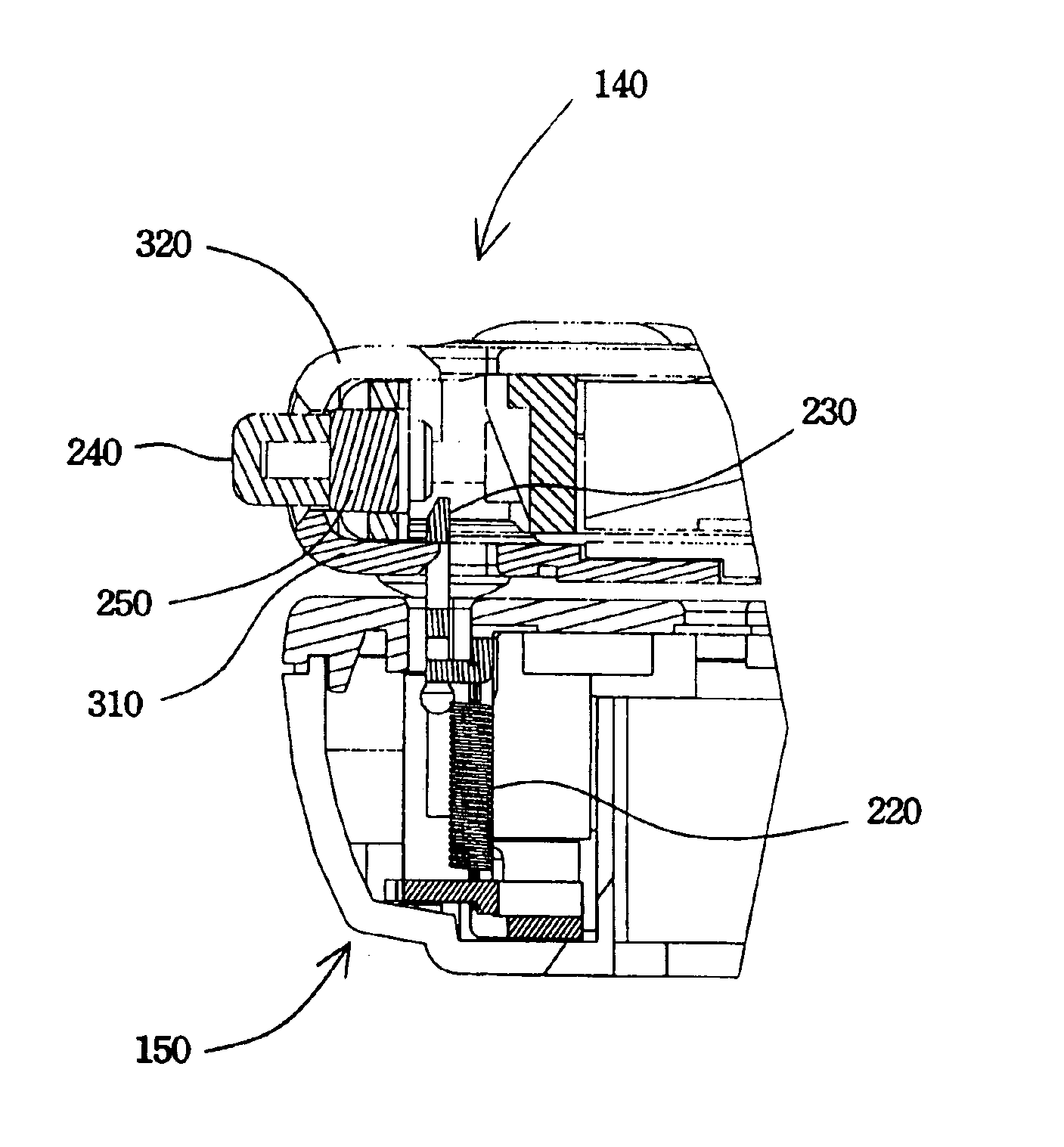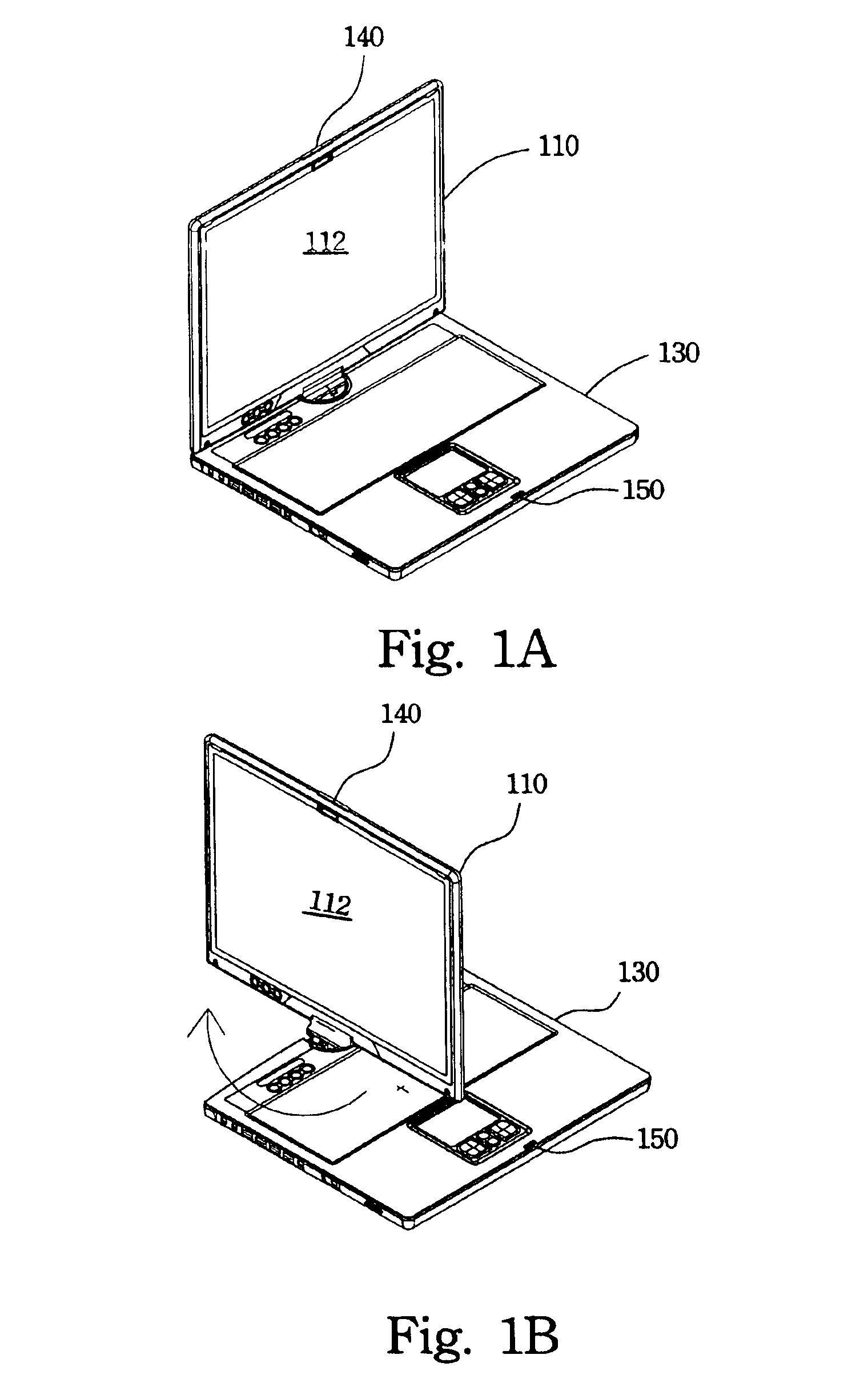Magnetic locking device
- Summary
- Abstract
- Description
- Claims
- Application Information
AI Technical Summary
Benefits of technology
Problems solved by technology
Method used
Image
Examples
Embodiment Construction
[0025]The following description is of the best presently contemplated mode of carrying out the present invention. This description is not to be taken in a limiting sense but is made merely for the purpose of describing the general principles of the invention. The scope of the invention should be determined by referencing the appended claims.
[0026]FIGS. 1A to 1C illustrate a schematic perspective view of a notebook / tablet dual-purpose personal computer having an open display with a magnetic locking device of a preferred embodiment according to the present invention. FIG. 1A illustrates the display as being just opened from a base of a notebook / tablet dual-purpose personal computer. FIG. 1B illustrates the display rotated about 90 degrees from the original position. FIG. 1C illustrates the display rotated about 180 degrees from the original position. Referring to FIGS. 1A to 1C, the notebook / tablet dual-purpose personal computer includes a display 110 and a computer base 130. The disp...
PUM
 Login to View More
Login to View More Abstract
Description
Claims
Application Information
 Login to View More
Login to View More - R&D
- Intellectual Property
- Life Sciences
- Materials
- Tech Scout
- Unparalleled Data Quality
- Higher Quality Content
- 60% Fewer Hallucinations
Browse by: Latest US Patents, China's latest patents, Technical Efficacy Thesaurus, Application Domain, Technology Topic, Popular Technical Reports.
© 2025 PatSnap. All rights reserved.Legal|Privacy policy|Modern Slavery Act Transparency Statement|Sitemap|About US| Contact US: help@patsnap.com



